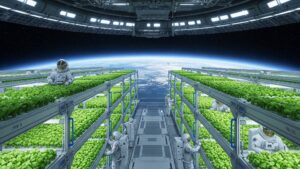Namami Yamuna: A Vision for a Clean and Sacred River | Yamuna Aarti by Delhi CM
The Yamuna River, often hailed as the lifeline of northern India, holds profound cultural, spiritual, and economic significance. Stretching over 1,376 kilometers, it sustains millions by providing water for drinking, irrigation, and industrial use. However, despite its revered status, the Yamuna today is a shadow of its former self, plagued by pollution, neglect, and overexploitation.
Understanding the Namami Gange Programme
Launched in June 2014, the Namami Gange Programme is an integrated conservation mission aimed at effective abatement of pollution, conservation, and rejuvenation of the Ganga River. With a budget outlay of ₹22,500 crore from 2023–26, it focuses on comprehensive river rejuvenation, including wastewater treatment, river surface cleaning, afforestation, and public awareness campaigns.
The Plight of the Yamuna River
The Yamuna, despite its importance, has been subjected to severe pollution over the years. Nearly 57 million people depend on its waters, accounting for more than 70% of Delhi’s water supply. However, the river is now considered one of the most polluted in the world, especially downstream of New Delhi, which contributes about 58% of its waste into the river.
Proposal: Namami Yamuna – A Comprehensive Rejuvenation Initiative
Drawing inspiration from the success and framework of the Namami Gange Programme, it’s imperative to launch a dedicated mission for the Yamuna River—Namami Yamuna. This initiative would encompass:
- Holistic Pollution Abatement: Implementing stringent measures to control industrial discharge, ensuring zero-liquid discharge from industries, and enhancing sewage treatment infrastructure to prevent untreated waste from entering the river.
- Community Engagement and Awareness: Mobilizing local communities, NGOs, and educational institutions to participate in river cleaning drives, workshops, and seminars to foster a sense of ownership and responsibility towards the river.
- Biodiversity Conservation: Restoring the river’s ecosystem by reintroducing native aquatic species, planting riparian vegetation, and establishing biodiversity parks along the riverbanks.
- Sustainable Agriculture Practices: Promoting organic farming and reducing the use of chemical fertilizers and pesticides in the Yamuna basin to minimize agricultural runoff into the river.
- Monitoring and Research: Establishing real-time water quality monitoring stations and encouraging research on innovative pollution control technologies.
Recent Developments: A Step Towards Rejuvenation
In a significant move, Delhi’s new Chief Minister, Rekha Gupta, along with her cabinet ministers, performed the Yamuna Aarti at Vasudev Ghat. This event marked the first major public engagement by the new government, symbolizing a renewed commitment to the river’s restoration. The ceremony not only highlighted the cultural importance of the Yamuna but also underscored the government’s dedication to addressing the challenges it faces.
Conclusion
The Yamuna River’s rejuvenation is not just an environmental imperative but also a cultural and economic necessity. By adopting a holistic approach, as envisioned in the proposed Namami Yamuna initiative, and with the renewed commitment from the current leadership, there is hope for a cleaner, healthier, and free-flowing Yamuna. Collective efforts from the government, industries, and citizens are crucial to restore the river to its former glory, ensuring it continues to nourish and inspire future generations.
Share this content:












Post Comment